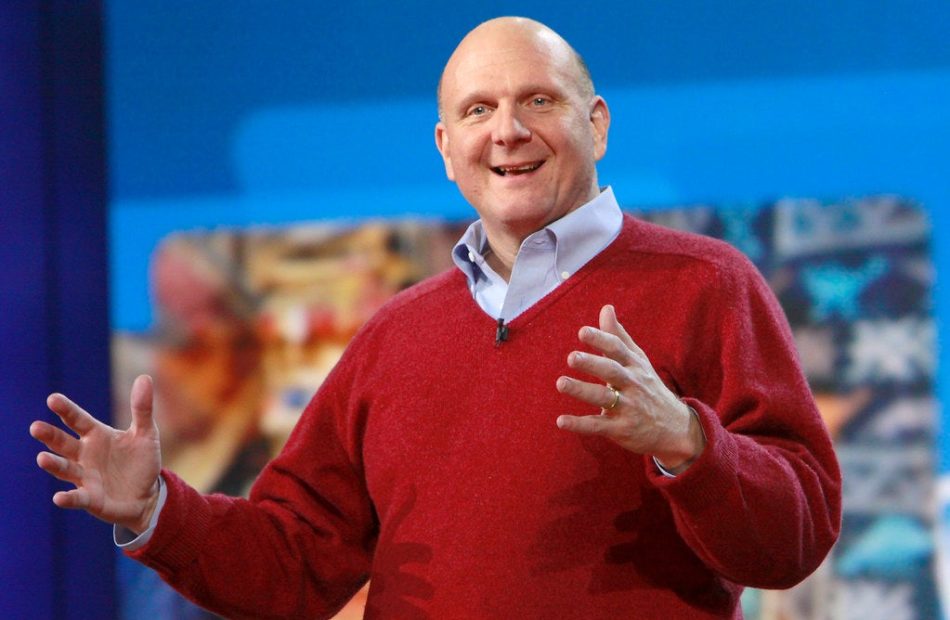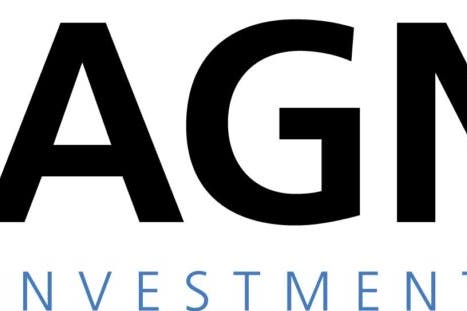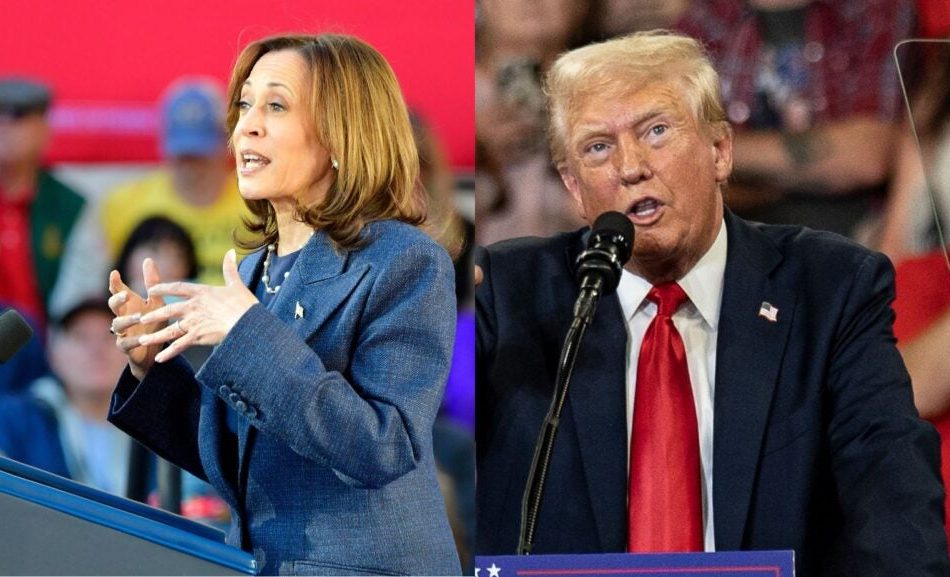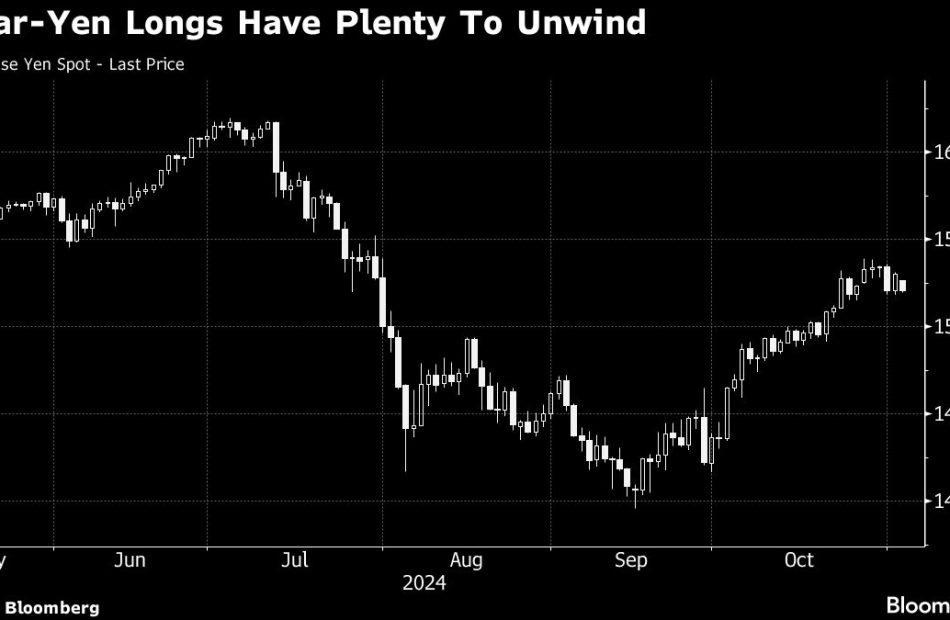Steve Ballmer Is Betting $40M On Facts As Heated Trump-Harris Battle Reaches Peak Crescendo — How Ex-Microsoft CEO Aims To Rescue American Democracy With Data
Former Microsoft Corporation CEO Steve Ballmer has invested $40 million in USAFacts this year to fortify democracy amid political unrest.
What Happened: Ballmer founded USAFacts, a non-profit initiative, in 2017 out of a desire to better understand how government funds, including his own tax dollars, were being used.
USAFacts has grown this year with a new series of videos that aim to provide voters with “no rhetoric, no bias, just the facts” on pressing issues like inflation and immigration — key points of debate in the current U.S. election, reported Financial Times.
While Ballmer’s past videos on YouTube showcase his famously high-energy, animated presentations at Microsoft, his approach with USAFacts is far more reserved.
In these videos, Ballmer calmly presents data and speaks over animated charts in a subdued tone for up to 15 minutes at a time.
Here’s an example:
Despite the rise of artificial intelligence and the role of social media platforms in spreading misinformation, Ballmer identifies the mobile device as the main distraction for the public, the report noted.
“I won’t say it’s Facebook or Twitter [now X] or Instagram or TikTok particularly, but they have built upon the usage patterns that make sense for the mobile device,” he told the publication.
The former CEO and owner of the Los Angeles Clippers has also upped his annual funding for USAFacts from $10-20 million to $40 million this year.
However, Ballmer conceded that gauging the impact of his initiative is difficult. While USAFacts has 360,000 newsletter subscribers and his video series has amassed over 45.5 million views, the effect on voters’ decisions remains unclear.
Why It Matters: Ballmer’s wealth has been significantly boosted by Microsoft’s AI-driven stock rally. In July, his net worth reached $157.2 billion, making him the sixth-richest person globally. Over 90% of his net worth was tied to Microsoft shares.
At the time of writing, Ballmer was ranked ninth on Bloomberg’s Billionaire Index, preceded by the likes of Elon Musk, Jeff Bezos, Mark Zuckerberg, and Bill Gates.
Meanwhile, the 2024 U.S. presidential election, scheduled for Nov. 5, 2024, features a significant matchup between Democratic nominee Kamala Harris and Republican nominee Donald Trump.
This election is being characterized as pivotal, with both candidates underscoring the stakes for democracy and the future of American society.
Image via Flickr
Read Next:
Disclaimer: This content was partially produced with the help of Benzinga Neuro and was reviewed and published by Benzinga editors.
Market News and Data brought to you by Benzinga APIs
© 2024 Benzinga.com. Benzinga does not provide investment advice. All rights reserved.
This Stock Has Quietly Paid A 14% Dividend For Almost Six Straight Years-Is It Right For You?
Benzinga and Yahoo Finance LLC may earn commission or revenue on some items through the links below.
Dividend kings and dividend aristocrats get a lot of attention from investors and the media due to their prolific track record of delivering passive income. That said, there is an abundance of other stocks that can generate passive income streams. One is AGNC Investment (Nasdaq: AGNC), a mortgage REIT. This stock may not be familiar, but it has paid investors a 14% dividend for almost the last six years.
Don’t Miss:
Mortgage REITs function by purchasing large tranches of mortgage-backed securities (MBSs), many of which are backed by Fannie Mae and Freddie Mac. Because these loans are secured, their profit yield is relatively low. Mortgage REITs generate extra profit by aggressively borrowing money to acquire as many MBSs as possible.
AGNC Investment, like all mortgage REITs, ability to generate profit hinges on their ability to borrow money at a lower interest rate than the borrowers whose loans are in the MBSs are paying. If the portfolios are large enough and most borrowers pay on time, mortgage REITs can generate solid income for investors. However, the post-COVID run-up in interest rates has created difficult market conditions for many Mortgage REITs.
Trending: These five entrepreneurs are worth $223 billion – they all believe in one platform that offers a 7-9% target yield with monthly dividends
Despite that, AGNC Investment has successfully paid its expected dividend through the Federal Reserve’s rate increases. This is not to say that higher interest rates haven’t impacted AGNC Investment in the past. There have been dividend cuts in this Mortgage REIT’s history. However, AGNC’s management has hedged its portfolio and stockpiled enough cash to outlast the recent rise in borrowing costs.
Trending: Wondering if your investments can get you to a $5,000,000 nest egg? Speak to a financial advisor today. SmartAsset’s free tool matches you up with up to three vetted financial advisors who serve your area, and you can interview your advisor matches at no cost to decide which one is right for you.
It’s on a 55-consecutive-month streak of paying out investor dividends – that’s almost six straight years. Now that interest rates are declining and the market is regaining its equilibrium, AGNC Investment looks well-positioned to continue making those dividend payments that passive income investors love so much.
'Trump Whale' Losing Grip On Polymarket Odds? Economist Justin Wolfers Wonders What's Behind The Latest Change
Influential economist Justin Wolfers noticed a significant shift in prediction market odds at Polymarket, sparking speculation about the declining influence of a whale heavily betting in favor of former President Donald Trump.
What Happened: Wolfers, in his X post on Sunday, drew attention to the sharp drop in betting odds for Trump, standing at 54% as of this writing, down from 66% on Oct. 30.
A professor at the Ford School of Public Policy at the University of Michigan, Wolfers expressed uncertainty about whether this change was due to the diminishing sway of the whale or a recent shift in polling.
Interestingly, federally-regulated prediction market Kalshi has also seen Trump’s odds plummet from 64% on Oct. 30 to 52% as of this writing.
Why It Matters: Polymarket, a cryptocurrency-based prediction market, built atop Ethereum ETH/USD’s Layer-2 chain Polygon MATIC/USD, has attracted over $3 billion in wagers for the 2024 presidential election outcome.
However, concerns of market manipulation surfaced after a single trader, identified as a French national, started placing large wagers in favor of Trump. The trader has denied having any political agenda and said they were only in it for the money.
Another prominent Polymarket trader, ‘Redegen’, has reaffirmed his position on Vice President Kamala Harris winning the popular vote, even as Trump remains his favorite to win the electoral college. Redegen’s multi-million-dollar position on Harris has seen substantial fluctuation, but he remains confident in his prediction.
Photo Courtesy: Shutterstock.com
Read Next:
Market News and Data brought to you by Benzinga APIs
© 2024 Benzinga.com. Benzinga does not provide investment advice. All rights reserved.
This Data Center Stock Could Go Parabolic Following Nvidia's Blackwell Launch
Believe it or not, Nvidia was once a company primarily focused on the gaming market. But over the last two years, the company has emerged as the world’s preeminent AI operation. How did that happen?
Well, one of Nvidia’s core products is an advanced chipset known as a graphics processing unit (GPU). GPUs are a critical piece of infrastructure in developing generative AI, and they’ve become a business worth tens of billions of dollars for Nvidia.
Start Your Mornings Smarter! Wake up with Breakfast news in your inbox every market day. Sign Up For Free »
Later this year, Nvidia is expected to release its most powerful GPU architecture yet — known as Blackwell. While this will surely be a tailwind for the semiconductor darling, I see another tempting opportunity that’s hiding in plain sight.
Below, I’m going to break down how the Blackwell launch could make data center company Vertiv (NYSE: VRT) a lucrative choice for AI investors.
It’s hard to say for certain how big of a business Blackwell will become for Nvidia. But with that said, some early trends uncovered by industry research analysts are hinting that the release is going to be a big hit. Last month, Morgan Stanley noted that their forecasts indicate Blackwell could generate $10 billion in revenue just in Nvidia’s fourth quarter.
Shortly thereafter, Morgan Stanley analyst Joseph Moore issued a report stating that Blackwell GPUs are already sold out for the next 12 months. I guess Nvidia CEO Jensen Huang wasn’t kidding when he said that demand for Blackwell is “insane.”
These tailwinds are undoubtedly a good sign for Nvidia. Below, I’m going to detail why Nvidia’s success with Blackwell should parlay into a tremendous opportunity for Vertiv.
At their core, GPUs have the ability to process sophisticated programs and algorithms that help train machine learning applications or large language models (LLMs). While this might sound simple, GPUs are far more complex than running a software program on your laptop.
IT architecture specialists such as Super Micro Computer or Dell Technologies help build the infrastructure that houses GPUs. Essentially, GPUs are integrated into clusters on server racks that sit inside data centers. Since the chipsets are constantly running programs and processing data, it’s not surprising to learn that data centers consume high levels of energy and run the risk of overheating.
Right now, data centers typically rely on air conditioning units, power generators, and fans to offset heat. However, as AI infrastructure spend continues to rise, data centers are going to need to identify more efficient ways to tame heat management. This is where Vertiv comes into the equation.
3 Top Energy Stocks to Buy in November
Broadly speaking, the energy sector is not for the faint of heart. Oil and natural gas prices are known for being highly volatile, which flows through to the sentiment around energy stocks like Chevron (NYSE: CVX), Enterprise Products Partners (NYSE: EPD), and Devon Energy (NYSE: DVN). But if you are looking for energy stocks, each one of the companies in this trio has something interesting to offer as Wall Street enters the month of November.
When you look at integrated energy giant Chevron, don’t think oil. Think diversification and financial strength. That’s what this company is built on. Starting with the business, Chevron has operations in the upstream (oil and gas production), the midstream (pipelines), and the downstream (chemicals and refining). Each of the segments of the energy industry operates a little differently and, when put together in one portfolio, they help to smooth out the inherent peaks and valleys of the commodity-driven sector. This is a key part of the reason that Chevron has managed to increase its dividend annually for 37 consecutive years despite operating in a volatile industry.
Start Your Mornings Smarter! Wake up with Breakfast news in your inbox every market day. Sign Up For Free »
But that’s not the only reason. Another key factor to consider is Chevron’s balance sheet. At the end of the second quarter, the oil giant’s debt-to-equity ratio was a tiny 0.15 times, the lowest among its closest peer group (and low on an absolute level, too). That gives the company the leeway to add leverage during energy downturns to support its business and its dividend. If you are an income investor looking for diversified exposure to the oil and gas sector, Chevron’s 4.3% dividend yield is a good way to go if you also want to sleep well at night.
That said, you could also opt to get your energy exposure in a different way. Specifically, by focusing on the one segment of the industry that isn’t quite so volatile: the midstream. Businesses like Enterprise own energy infrastructure, including pipelines, storage, transportation, and processing assets. These are vital to moving oil and natural gas around the world and tend to see strong demand in both good energy markets and bad ones. That changes the equation here because Enterprise simply charges fees for the use of its assets.
That means that energy price swings aren’t as big a deal for Enterprise’s cash flows as they would be for an energy producer. Thus, this master limited partnership (MLP) can easily support its huge 7.3% yield. To put a number on that, distributable cash flows cover the distribution 1.7 times over right now. There’s a lot of room for adversity before a cut would be on the table. And it helps to explain how Enterprise has increased its distribution for 26 consecutive years. If you want energy exposure but prefer boring investments, Enterprise has you well-covered.
Dollar Weakens as US Polls Signal No Clear Leader: Markets Wrap
(Bloomberg) — The dollar fell as the latest raft of US presidential election polling data showed no clear advantage between Kamala Harris and Donald Trump. Oil rose after OPEC+ delayed a hike in output.
Most Read from Bloomberg
The greenback dropped against most major currencies such as the yen and the Australian dollar in early Monday trading, while 10-year Treasury futures rose.
The weakening of the greenback was a sign to some that investors may be walking back confidence in a victory for Donald Trump, after a poll by the Des Moines Register showed Harris with a 47%-44% lead in Iowa — a state Trump has won in each of his prior elections. One element of the so-called Trump trade favors higher Treasury yields and a stronger US dollar.
Polls released Sunday showed the two candidates poised for a photo finish, with voters narrowly split both nationally and across the pivotal swing states.
Shares in Australia and South Korea climbed. US stock futures slipped, however, after Wall Street’s gains Friday following robust earnings from the likes of Amazon.com and Intel Corp. Japanese markets are closed for a holiday, which means there will be no Treasuries trading in Asian hours.
“To the extent there was something to the ‘Trump trade’ last week, it is beating a bit of a retreat this morning,” said Ray Attrill, head of FX strategy at National Australia Bank Ltd. in Sydney.
Wall Street tried not to read too much into jobs data Friday showing US hiring advanced at the slowest pace since 2020 in October while the unemployment rate remained low. The numbers were distorted by severe hurricanes and a major strike. The jobs report is the last major data point before the election.
In Australia, Westpac Banking Corp. increased its share buyback to A$2 billion ($1.3 billion) and reported profit that beat estimates. The shares edged lower.
Oil, Gold
West Texas Intermediate, the US crude benchmark, rose more than 1% early Monday, extending its run of daily advances to four. OPEC+ agreed to push back its December production increase by one month, the second delay to its plans to revive supply as prices continue to struggle amid a fragile economic outlook.
Gold was stable at around $2,738 per ounce. The price of the precious metal has fallen in the prior two trading sessions after hitting a record high last week.
Dow Jones Futures Fall Amid Election Shifts; Big S&P 500 Winners On Tap, Nvidia To Join Dow
Dow Jones futures fell slightly Sunday evening, along with S&P 500 futures and Nasdaq futures, with shifting bets on the presidential election in focus. The next Federal Reserve meeting and a continued earnings wave also are on tap this week.
Warren Buffett’s Berkshire Hathaway (BRKB) on Saturday reported operating profit fell 6% vs. a year earlier to $10.09 billion. Revenue fell a fraction to $93 billion. Cash levels swelled to a fresh high of $325.21 billion, fueled by sales of Apple (AAPL) and Bank of America (BAC). Berkshire halted stock buybacks.
Vistra (VST), the S&P 500’s top performer in 2024, reports this coming week. So do Vista rival Constellation Energy (CEG) as well as Arista Networks (ANET), Palantir Technologies (PLTR) and Howmet Aerospace (HWM) — all top-20 S&P 500 stocks in 2024.
↑
X
Palantir Earnings Due As Tech Stocks Stumble
Nvidia (NVDA) fell below a buy point last week but reclaimed a key level Friday. Late Friday, S&P Dow Jones Indices announced that Nvidia will replace rival chipmaker Intel (INTC) in the Dow Jones Industrial Average before the open on Nov. 8. NVDA stock rose modestly Friday night on the Dow Jones news. Nvidia stock fell 4.4% to 135.37 during the week, below the 140.76 buy point, but finished above the 21-day line.
Tesla (TSLA) tumbled below a buy point, on the verge of a sell signal.
Investors should be careful until the election and other big news is out of the way.
Dow Jones Futures Today
Dow Jones futures fell 0.3% vs. fair value. S&P 500 futures declined 0.1% and Nasdaq 100 futures lost a fraction.
Futures may be reacting to prediction markets showing the presidential race as a true toss-up once again. The stock market had been pricing in a Donald Trump victory over Kamala Harris on Nov. 5 but pared those bets late last week, taking their cue from betting markets. Those betting markets showed continued movement over the weekend.
The 10-year Treasury yield rose to 4.39%.
Crude oil futures rose nearly 2%. On Sunday, OPEC+ delayed a production increase by another month, until the end of 2024. The move wasn’t a surprise, especially just ahead of U.S. elections.
Remember that overnight action in Dow futures and elsewhere doesn’t necessarily translate into actual trading in the next regular stock market session.
Join IBD experts as they analyze leading stocks and the market on IBD Live
Stock Market Rally
The stock market rally suffered losses last week, including Thursday’s big sell-off led by Microsoft (MSFT) and Meta Platforms (META). The indexes bounced back somewhat on Friday thanks to Amazon.com (AMZN) and a weak jobs report, but faded into the close as Treasury yields jumped.
Trump Media & Technology (DJT), which has acted as a Trump election sentiment gauge, plunged nearly 41% in the past three sessions. That’s after DJT stock skyrocketed 338% in just over a month. DJT was indicated sharply lower overnight on Robinhood.
The Dow Jones Industrial Average shed 0.15% in last week’s stock market trading. The S&P 500 index lost 1.4%. The Nasdaq composite, which hit a record high Thursday morning, gave up 1.5%. The small-cap Russell 2000 edged up 0.1%.
All four indexes bounced Friday but slashed intraday gains after peaking around their 21-day averages. The Dow and Russell 2000 did recover their 50-day lines after dropping below that key level Thursday.
The Invesco S&P 500 Equal Weight ETF (RSP) fell nearly 1% for the week and failed to regain its 50-day line Friday.
The 10-year Treasury yield jumped 13 basis points to 4.36%, the highest level in nearly four months. The yield finally closed above the 4.3% level on Friday.
U.S. crude oil futures fell 3.2% to $69.49 a barrel last week.
What Trump Vs. Harris Election Outcomes Mean For S&P 500, Fed Rate Cuts
Stock Market Election Day … Week?
It’s possible that the market will remain cautious for the next several days. Election Day is Tuesday, Nov. 5, but it’s probable or even highly likely that it’ll be unclear who won the presidential election for at least a few days as key states such as Pennsylvania count mail-in ballots.
So that uncertainty — which could stretch out to weeks — may hang over the stock market, as well as bitcoin, gold, Treasury yields and individual names such as Tesla and DJT stock.
The Federal Reserve meets Wednesday-Thursday, with a Fed rate cut seen as a lock on Thursday afternoon. But there’s a chance of a December pause.
China’s parliament meets this coming week. There are hopes or expectations that a major fiscal stimulus will be announced late in the week.
And, of course, there will still plenty of earnings reports.
ETFs
Among growth ETFs, the Innovator IBD 50 ETF (FFTY) fell 1% last week. The iShares Expanded Tech-Software Sector ETF (IGV) rose a fraction. The VanEck Vectors Semiconductor ETF (SMH) slumped 3.25%. Nvidia stock is SMH’s dominant holding.
Reflecting more-speculative story stocks, ARK Innovation ETF (ARKK) lost 2.2% last week and ARK Genomics ETF (ARKG) bounced 3%. Tesla stock remains a top holding across Ark Invest’s ETFs.
SPDR S&P Metals & Mining ETF (XME) dipped 0.2% last week. SPDR S&P Homebuilders ETF (XHB) retreated 1.7%. The Energy Select SPDR ETF (XLE) dropped 2% and the Health Care Select Sector SPDR Fund (XLV) gave up 0.6%.
The Industrial Select Sector SPDR Fund (XLI) fell 1%. The Financial Select SPDR ETF (XLF) edged down 0.1%.
Time The Market With IBD’s ETF Market Strategy
Key Earnings
Constellation Energy reports early Monday, with peer Vistra due on Thursday. The electric utilities, which are both nuclear and AI plays, have been consolidating near the 21-day line after their latest runs.
Late Friday, S&P Dow Jones Indices said Vistra will join the Dow Jones Utility Average before the open on Nov. 8.
But Vistra, Constellation Energy and some utility and nuclear plays fell solidly Friday night. The reason was not clear.
Palantir’s earnings are due Monday night. Shares fell from record highs last week, but found 21-day support.
Howmet Aerospace earnings are early Wednesday. The titanium alloy supplier for aircraft is one of the top S&P 500 performers without an AI connection. Howmet stock has pulled back to find support at the 50-day line, just below the 21-day.
Arista stock is due Thursday night. The AI networking play fell to about its 10-week line, but bounced to end the week near the 21-day line in a possible emerging consolidation just above a prior base. A strong move would break a downtrend.
Axon Enterprise (AXON), Iron Mountain (IRM), FICO (FICO), Targa Resources (TRGP), also top-20 S&P 500 performers in 2024, also are due this coming week.
AI chip IPO Astera Labs (ALAB) is another notable report on tap, along with cybersecurity giant Fortinet (FTNT) and e-commerce and payments giant MercadoLibre (MELI). All are near buy points.
Nuclear Power Stocks Skid On This Regulatory Move
Tesla Stock
Shares tumbled 7.5% to 248.98 for the week, well below a 264.82 cup-with-handle buy point cleared on Oct. 25, according to MarketSurge. TSLA stock came close to triggering the automatic 7%-8% loss sell rule on Friday but never did. Shares are still holding the bulk of the prior week’s 22% spike on earnings, but are getting close to the low of the Oct. 24 gap-up day.
It’s possible that some of Tesla’s recent action reflects shifting perceptions on the presidential race, with CEO Elon Musk aggressively campaigning for Donald Trump.
Meanwhile, China EV giant BYD (BYDDF) reported higher revenue than Tesla for the first time in the third quarter, while its October sales suggest BYD will retake the BEV crown from Tesla in Q4.
How To Handle Stock Market Election Jitters
The stock market rally has retreated but is still holding key support. While some mammoth earnings are out of the way, the presidential election and other big news will remain big uncertainties in the short run.
The upside from a modest pullback is that most leading stocks still look healthy, pulling back to key levels. If the market takes off, a number of buying opportunities could present themselves. So keep your watchlists fresh.
But if the major indexes break below their 50-day lines, you’ll want to reduce exposure. So have your exit strategy in place.
Nvidia, Axon and MercadoLibre stock are on IBD Leaderboard. Nvidia stock is on SwingTrader. Nvidia, Arista and Fortinet stock are on the IBD 50. Arista Networks, Axon and Palantir stock are on the IBD Big Cap 20.
Read The Big Picture every day to stay in sync with the market direction and leading stocks and sectors.
Please follow Ed Carson on Threads at @edcarson1971 and X/Twitter at @IBD_ECarson for stock market updates and more.
YOU MIGHT ALSO LIKE:
Why This IBD Tool Simplifies The Search For Top Stocks
Best Growth Stocks To Buy And Watch
IBD Digital: Unlock IBD’s Premium Stock Lists, Tools And Analysis Today
How To Invest: Rules For When To Buy And Sell Stocks In Bull And Bear Markets
ROSEN, LEADING TRIAL ATTORNEYS, Encourages Acadia Healthcare Company, Inc. Investors to Secure Counsel Before Important Deadline in Securities Class Action First Filed by the Firm – ACHC
NEW YORK, Nov. 03, 2024 (GLOBE NEWSWIRE) —
WHY: Rosen Law Firm, a global investor rights law firm, reminds purchasers of securities of Acadia Healthcare Company, Inc. ACHC between February 28, 2020 and October 18, 2024, both dates inclusive (the “Class Period”) of the important December 16, 2024 lead plaintiff deadline in the securities class action first filed by the Firm.
SO WHAT: If you purchased Acadia Healthcare securities during the Class Period you may be entitled to compensation without payment of any out of pocket fees or costs through a contingency fee arrangement.
WHAT TO DO NEXT: To join the Acadia Healthcare class action, go to https://rosenlegal.com/submit-form/?case_id=28482 or call Phillip Kim, Esq. toll-free at 866-767-3653 or email case@rosenlegal.com for information on the class action. A class action lawsuit has already been filed. If you wish to serve as lead plaintiff, you must move the Court no later than December 16, 2024. A lead plaintiff is a representative party acting on behalf of other class members in directing the litigation.
WHY ROSEN LAW: We encourage investors to select qualified counsel with a track record of success in leadership roles. Often, firms issuing notices do not have comparable experience, resources, or any meaningful peer recognition. Many of these firms do not actually litigate securities class actions, but are merely middlemen that refer clients or partner with law firms that actually litigate cases. Be wise in selecting counsel. The Rosen Law Firm represents investors throughout the globe, concentrating its practice in securities class actions and shareholder derivative litigation. Rosen Law Firm has achieved the largest ever securities class action settlement against a Chinese Company. Rosen Law Firm was Ranked No. 1 by ISS Securities Class Action Services for number of securities class action settlements in 2017. The firm has been ranked in the top 4 each year since 2013 and has recovered hundreds of millions of dollars for investors. In 2019 alone the firm secured over $438 million for investors. In 2020, founding partner Laurence Rosen was named by law360 as a Titan of Plaintiffs’ Bar. Many of the firm’s attorneys have been recognized by Lawdragon and Super Lawyers.
DETAILS OF THE CASE: According to the lawsuit, defendants throughout the Class Period made materially false and/or misleading statements and/or failed to disclose that: (1) Acadia Healthcare’s business model centered on holding vulnerable people against their will in its facilities, including in cases where it was not medically necessary to do so; (2) while in Acadia Healthcare facilities, many patients were subjected to abuse; (3) Acadia Healthcare deceived insurance providers into paying for patients to stay in its facilities when it was not medically necessary; and (4) as a result, defendants’ statements about its business, operations, and prospects were materially false and misleading and/or lacked a reasonable basis at all relevant times. When the true details entered the market, the lawsuit claims that investors suffered damages.
To join the Acadia Healthcare class action, go to https://rosenlegal.com/submit-form/?case_id=28482 call Phillip Kim, Esq. toll-free at 866-767-3653 or email case@rosenlegal.com for information on the class action.
No Class Has Been Certified. Until a class is certified, you are not represented by counsel unless you retain one. You may select counsel of your choice. You may also remain an absent class member and do nothing at this point. An investor’s ability to share in any potential future recovery is not dependent upon serving as lead plaintiff.
Follow us for updates on LinkedIn: https://www.linkedin.com/company/the-rosen-law-firm or on Twitter: https://twitter.com/rosen_firm or on Facebook: https://www.facebook.com/rosenlawfirm.
Attorney Advertising. Prior results do not guarantee a similar outcome.
Contact Information:
Laurence Rosen, Esq.
Phillip Kim, Esq.
The Rosen Law Firm, P.A.
275 Madison Avenue, 40th Floor
New York, NY 10016
Tel: (212) 686-1060
Toll Free: (866) 767-3653
Fax: (212) 202-3827
case@rosenlegal.com
www.rosenlegal.com

Market News and Data brought to you by Benzinga APIs
© 2024 Benzinga.com. Benzinga does not provide investment advice. All rights reserved.
Millionaire In 10 Years? These Real Estate Markets Might Take You There
Several major housing markets in the West and Midwest are on track to join the million-dollar club within the next decade, according to new projections from Realtor.com.
Boise City, Idaho, leads the pack of emerging high-value markets, with median home prices expected to climb from $464,578 today to nearly $1.2 million by 2033. The forecast is based on the city’s 58.2% price growth rate observed between 2014 and 2019.
Don’t Miss:
The analysis, which examined price trajectories in America’s 100 largest metros, points to a broader trend of rising valuations in markets near existing high-cost areas. In California’s Central Valley, Stockton is a perfect example, with prices projected to reach $1.4 million by 2033, up from today’s median of $579,292.
“As the prices increase and price folks out of the immediate San Francisco Bay Area, people will venture further out into the Valley,” Nicole Brown, global real estate advisor at Corcoran Icon Properties, said to Realtor. “Stockton is a great location positioned between the metros of San Francisco and Sacramento.”
Other markets poised for appreciation include Salt Lake City, Portland, and Colorado Springs, all projected to cross the million-dollar threshold within 10 years. Denver and Sacramento are also expected to see substantial gains, with median prices potentially reaching $1.3 million and $1.1 million respectively.
See Also: This Adobe-backed AI marketing startup went from a $5 to $85 million valuation working with brands like L’Oréal, Hasbro, and Sweetgreen in just three years – here’s how there’s an opportunity to invest at $1,000 for only $0.50/share today.
The Sun Belt, despite its rapid growth, shows notably different dynamics. “Even though the Sun Belt is growing fast, there’s still a lot of land and cheaper housing,” Yancy Forsythe, owner of Missouri Valley Homes, said in the report. “The availability of land makes it easier to build new homes, which keeps prices from jumping too high.”
Realtor.com economist Hannah Jones cautions that the projections assume current trends will continue. “If the local economy shifts, demand could fall and prices may not keep up with recent growth,” she said. “On the supply side, home construction could pick up, taking some pressure off of inventory, which would allow for slower price growth.”
The analysis used pre-pandemic data from 2014-2019 to avoid market distortions caused by recent economic upheavals, then applied those growth rates to current prices to generate the 10-year forecasts.
Trending: Maker of the $60,000 foldable home has 3 factory buildings, 600+ houses built, and big plans to solve housing — you can become an investor for $0.80 per share today.
By this measure, Seattle tops the list in absolute terms, with prices potentially reaching $1.48 million by 2033, up from today’s $694,351.
Here is the entire list, according to Realtor’s data:
Boise City, Idaho
- Current median price: $464,578
- Projected 2033 price: $1,162,910
- Growth rate: 58.2%
Salt Lake City, Utah
- Current median price: $493,414
- Projected 2033 price: $1,064,147
- Growth rate: 46.9%
Portland, Oregon
- Current median price: $501,245
- Projected 2033 price: $1,051,838
- Growth rate: 44.9%
Colorado Springs, Colorado
- Current median price: $454,673
- Projected 2033 price: $1,019,929
- Growth rate: 49.8%
Stockton, California
- Current median price: $579,292
- Projected 2033 price: $1,446,731
- Growth rate: 58.0%
Denver, Colorado
- Current median price: $547,966
- Projected 2033 price: $1,296,676
- Growth rate: 53.8%
Sacramento, California
- Current median price: $557,522
- Projected 2033 price: $1,103,325
- Growth rate: 40.7%
Boston, Massachusetts
- Current median price: $622,902
- Projected 2033 price: $991,804
- Growth rate: 26.2%
Honolulu, Hawaii
- Current median price: $683,086
- Projected 2033 price: $1,143,830
- Growth rate: 29.4%
Seattle, Washington
- Current median price: $694,351
- Projected 2033 price: $1,485,885
- Growth rate: 46.3%
Read Next:
Market News and Data brought to you by Benzinga APIs
© 2024 Benzinga.com. Benzinga does not provide investment advice. All rights reserved.
Does Billionaire Ken Griffin Know Something Wall Street Doesn't? The Citadel CEO Dumps $993 Million in Nvidia Stock
Nvidia (NASDAQ: NVDA) is the hottest stock on Wall Street. For the last few years, it hit the headlines as it dominated the artificial intelligence (AI) chip supply, controlling roughly 90% of the incredibly lucrative market. As its earnings shot through the roof, so too did its stock price. It’s up more than 1,000% since late 2022.
The semiconductor giant is a favorite not just of retail investors, but of funds across Wall Street. So why are Ken Griffin and his team at Citadel selling a huge portion of their stake?
Start Your Mornings Smarter! Wake up with Breakfast news in your inbox every market day. Sign Up For Free »
Citadel Securities is a massive hedge fund known on Wall Street known as one of the most successful institutional investors around. This year has been kind to the firm. Net trading revenue from the combined first two quarters of 2024 was up 81% year over year, earning Citadel nearly $5 billion.
Part of that $5 billion came from the sale of just under 9.3 million shares of Nvidia — almost 80% of Citadel’s stake. At an average price of about $107 per share, the move netted the firm $993 million.
Although Griffin’s fund has to report the details of trades like these to the Securities and Exchange Commission (SEC) quarterly, there’s really no other information available that can clue us into what Griffin is thinking. The sale of 80% of his stake may look like a cause for concern, but without more information, it’s likely this is just a repositioning.
I’m sure he decided that he was satisfied with the return on his investment, and since Nvidia was trading at or near all-time highs at the time, it was as good a time as any to make an exit. I wouldn’t read into the trade any further.
Incredibly, even after the success Nvidia has delivered over the last few years, it looks like there is still a lot of runway ahead. Companies around Silicon Valley are locked in a race that means billions of dollars will continue to flow into Nvidia’s coffers. Alphabet CEO Sundar Pichai put it bluntly: “The risk of underinvesting is dramatically greater than the risk of overinvesting for us.” It’s why the company is on track to spend $50 billion in capital expenditures this year, up from $31 billion the year before.
With the imminent release of Blackwell, the next iteration of Nvidia’s AI-powering superchips, sales will likely only accelerate from their current fever-pitch levels. It’s been reported that Nvidia is sold out of Blackwell for a full 12 months after its launch. Despite the new chip hitting the market, its current iteration, Hopper, is still in high demand and looks to continue to be for well beyond Blackwell’s launch.










